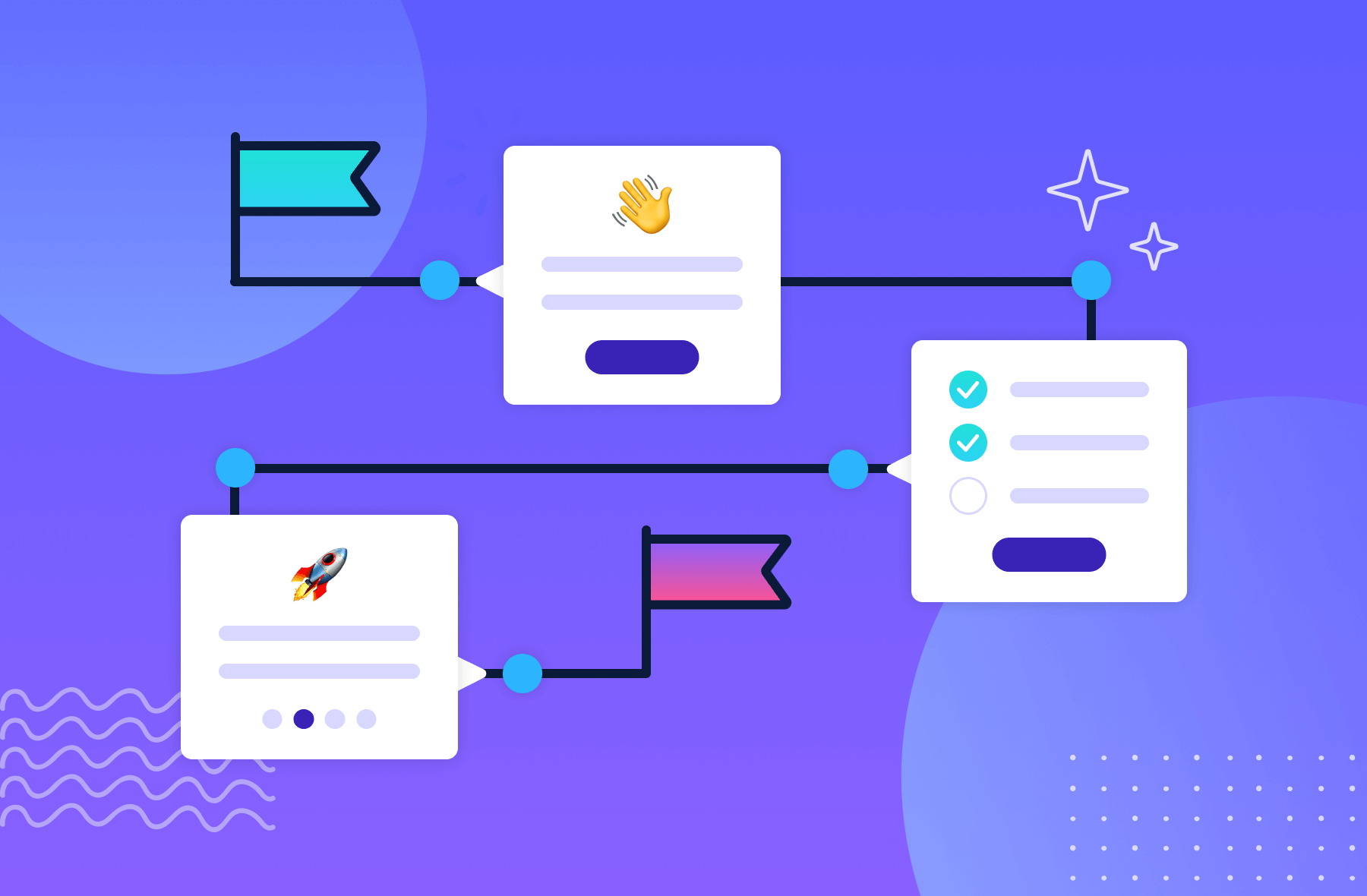7 examples of effective insurance tech onboarding experiences

.png)

.png)
For insurance tech platforms, onboarding isn't just the first step—it's your make-or-break moment. Agents under pressure need to generate quotes and issue policies quickly. Policyholders want answers, not a scavenger hunt. But when onboarding is confusing or overloaded with irrelevant steps, users stall out. And when they stall, they churn.
For insurance tech platforms, onboarding isn't just the first step—it's your make-or-break moment. Agents under pressure need to generate quotes and issue policies quickly. Policyholders want answers, not a scavenger hunt. But when onboarding is confusing or overloaded with irrelevant steps, users stall out. And when they stall, they churn.
This post breaks down the core reasons insurance tech onboarding often misses the mark—and how you can redesign it to drive adoption, speed, and trust from day one.
Insurance software is often more complex than it needs to be. Why? Because it’s built to serve multiple user types—agents, underwriters, brokers, and policyholders—each with different needs, technical comfort levels, and workflows. Add in layers of compliance, regional regulation, and legacy integrations, and it’s no wonder onboarding becomes overwhelming.
Here’s where onboarding commonly breaks down:
Insurance onboarding doesn’t need to be flashy. It needs to be clear, fast, and aligned to real-world use. Users aren’t signing up to explore your product—they’re there to get something done.
Here’s what effective onboarding looks like for each audience:
Insurance tech doesn’t have to start from scratch. Some of the most effective onboarding practices come from companies outside the industry that have mastered intuitive, user-focused design.
Here’s what you can borrow:
Beyond borrowing from general SaaS, insurance platforms benefit from strategies designed for the industry’s unique demands—like regulation, distributed teams, and long-term customer relationships.
Here’s what’s proven effective:
Lemonade offers a streamlined onboarding that feels more like a guided quiz than a form. Users answer playful, conversational questions that instantly generate their quote and policy options. The minimal design, chatbot-style interface, and rapid output help users feel confident early in the process, reducing friction in quote-to-policy conversion.

Zurich collaborated with partners like Deloitte Digital to launch the MyCustomer mobile application, a paperless, intuitive tool designed specifically for agents in the field. Prior to this, agents relied on manual, paper-based processes that slowed down quoting, proposal generation, and client service. The app integrates lead management, scheduling, and in-app insurance quoting—making agent onboarding smoother, faster, and more effective deloittedigital.com.
By enabling agents to prepare and deliver proposals on their tablets, with instant access to policy underwriting rules and documentation, Zurich reduced administrative friction and improved overall agent efficiency. This experience not only shortened the onboarding curve for new agents but also enhanced client interactions from day one.
GetSafe’s mobile onboarding begins by identifying the user’s coverage needs—whether renters, liability, or pet insurance—to customize dashboards and task lists. The app simplifies documentation, claims status updates, and policy adjustments on one screen. This early segmentation leads to better engagement and more relevant user journeys.

While Zocdoc isn’t an insurer, its onboarding model—built to streamline healthcare access—provides lessons for insurance tech. It splits the flow into clear steps: searching providers, entering insurance info, scheduling appointments, and creating accounts. Auto-detection of insurance via photo upload and intuitive filters make it friction-free for users seeking insurance-supported providers.

Root uses driver performance metrics during onboarding to compute real-time quotes. Users opt into behavior tracking, receive feedback, and instantly see how safe driving affects pricing. This educational and transparent approach demystifies premiums, builds trust, and gamifies engagement even before coverage begins.
Oscar Health’s onboarding emphasizes plain language and vibrant graphics to explain plan features. It prominently highlights FAQs, digital ID cards, and virtual care access points so users instantly see what’s included and how to use it. This reduces common hurdles in healthcare onboarding and supports self-service adoption.

Policygenius begins with a simple question: what are you trying to protect? Whether it's family futures, home equity, or income, users are guided to coverage recommendations tailored to their needs. This human-centered onboarding builds emotional engagement and aligns product education with user values.
In today’s digital insurance landscape, good onboarding isn’t a bonus—it’s the baseline. Users expect fast answers, intuitive steps, and clear value from the first click. The best platforms deliver that through personalized flows, embedded support, and tools that mirror real-world tasks.
But here’s the truth: there’s no one-size-fits-all formula. As OpenView’s Margaret Kelsey puts it, “There’s no definitive best user onboarding because users’ experiences vary so much from product to product.” That’s especially true in insurance, where customer needs range from quick claims filing to complex policy management.
The most effective teams aren’t chasing perfection. They’re learning, testing, and adapting—designing onboarding around the unmet needs and common roadblocks their users face.
When you meet users where they are (even when they’re frustrated or at risk of churning), you stop being just a platform. You become a guide—helping them navigate complexity, find value, and build confidence with every step.
Thoughtful onboarding in insurance tech doesn’t just make users feel more confident—it delivers measurable business impact. A well-designed onboarding experience:
In short, investing in onboarding isn’t just about user experience—it’s about long-term performance, trust, and scalability.
Want to master the art of user onboarding? Complete our free User Onboarding 101 Certification course.